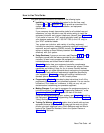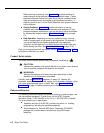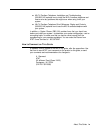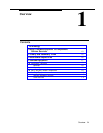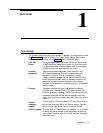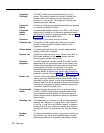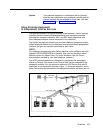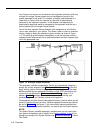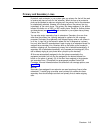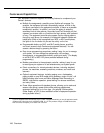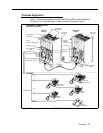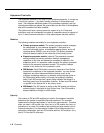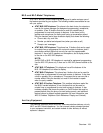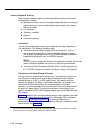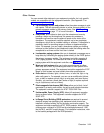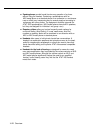
Primary and Secondary Lines
By default, each extension in your system gets one primary line that will be used
to receive and place all calls for that extension. When the user at an extension
picks up the handset to make an outgoing call, the primary line for the extension
is automatically selected. Likewise, all incoming calls on the primary line ring
immediately at the user’s phone. The primary line always appears on the bottom
leftmost line button on an MLS- or MLC-model phone. Except for Hotline phones
and doorphones (see page 4-23), each extension in your system has a primary
Centrex line.
You can also assign secondary lines to extensions. Secondary lines are lines
other than the primary line, typically assigned to a phone for call coverage
purposes. Secondary lines generally use delayed ringing; when a call comes in
on a line, it rings first at the extension where the line is assigned as a primary
line; only after about 20 seconds does it begin ringing at an extension where it is
assigned as a secondary line. Likewise, when a user picks up the handset to
make an outgoing call, the extension’s primary line is selected automatically. A
secondary line is selected automatically only to answer an incoming call (if the
call is already ringing at your phone when you pick up the handset).
All lines are automatically assigned to the first phone connected to the
equipment controller; but only the line assigned to the bottom leftmost line
button on the phone is primary. All of the other lines assigned to the extension
are secondary lines. (This default line arrangement provides Central Call
Coverage; for more information about this and other call coverage options, see
page 4-3.)
NOTE:
Secondary lines assigned to an extension are used as primary lines at other
extensions. To avoid tying up another user’s primary line, callers who have
secondary lines should always use their own primary lines to make outgoing
calls.
Overview
1-5



